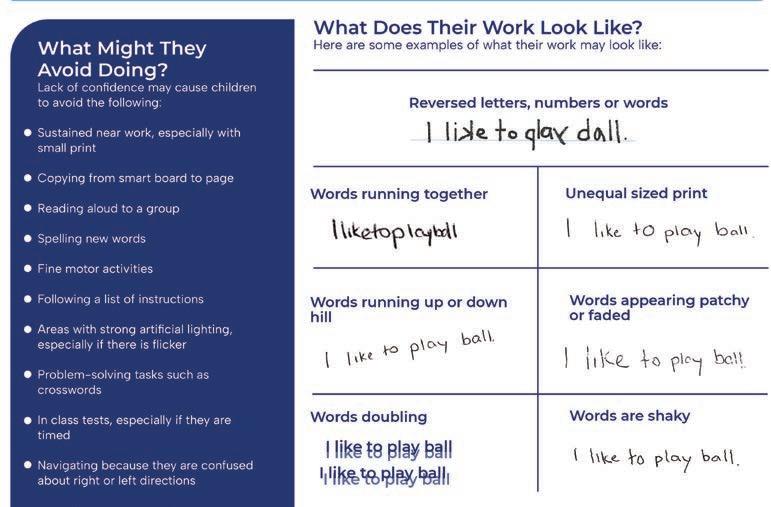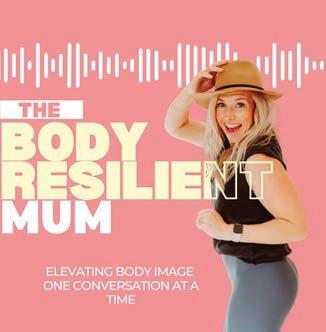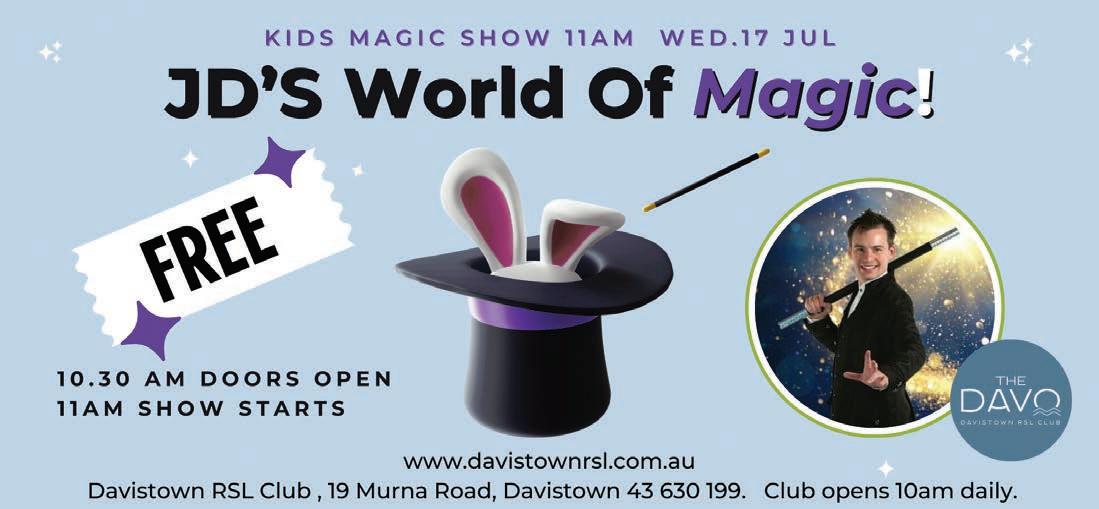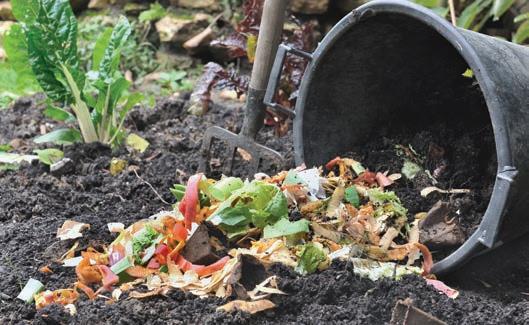




With winter upon us and the unpredictable weather that lingers, I am hearing of many families being struck down with illness.
It’s been a challenging past two months with us as well, with my two eldest kids having chest infections, suspected pneumonia and ongoing days off school. It brings an added level of challenges, trying to help our little ones and give them the extra ‘mummy cuddles’ they need when they aren’t feeling their bright and bubbly selves, still juggling work and keeping yourself well and nourished so you don’t fall ill – it’s a lot.
In times like this, I get caught between wanting to ‘ramp up’ or ‘take a break’. Wanting to either get on top of the washing, housework and cooking nourishing foods to make everyone feel better or spend the evenings and weekends curled up on the lounge with a blanket, herbal tea and a book. In these moments, I find myself thinking nature has the right idea – hibernating in the winter – retracting, resting and conserving energy for the warmer months.
So, in a world where we are constantly on the go, try and schedule some time for rest, eating a hearty soup and enjoying a good book or movie – I promise you, your mind and body will thank you!
Sending love and healthy vibes to you, Coasties xxx
Art Director/Editor
Tanzie Carpenter tanzie@onthecoastpublications.com.au
Production Luke Carpenter luke@onthecoastpublications.com.au
Editor Jessica Sanford editor@onthecoastpublications.com.au
Publisher
Tanzie Carpenter / 0414 611 851 Luke Carpenter / 0405 449 339
trading as On the Coast Publications ABN 52 212 212 482 PO Box 3251, Bateau Bay NSW 2261 onthecoastpublications.com.au
proudly supported by
For advertising enquiries advertising@onthecoastpublications.com.au
For article contribution enquiries tanzie@onthecoastpublications.com.au
Cover image
The Natural Photography Co @thenaturalphotographyco @thenatural_photographyco
Imagery freepik.com
Contributors
Dr Nicholas Altuneg, Sam and Jordi Woods, Sarah Tolmie, Simon Tarrant, Louise Hurley, Alex Wilson, Alyssa Said, Alita Blanchard, Selina Chapman, Carin Clegg, Alice Worthy and Georgia Spencer
4 Identifying vision related learning difficulties
6 Winter’s ‘IT’ ac cessory

7 Matters of life & love
8 Effective Family Law Mediation: Key tips for a successful outcome
10 Maximising your Families Future: Investing in Your Children’s Tomorrow
12 D iscover Andy Griffiths new book – Adventures Unlimited: The Land of Lost Things
13 Don’t let cold mornings derail your fitness
14 Trauma: What’s normal?
16 Introducing MLS Laser Therapy: A game–changer for sports injury recovery 18 Supp orting your child’s intuitive eating skills 20 How to repair after a tough day with your kids 22 Rest is not a four–letter word
Eat like an Eco–Warrior
Due dates are over due for a re–brand
Cracking the Code: How to navigate property settlement after a relationship breakdown
As parents, we want our children to thrive academically and reach their full potential. Sometimes, struggles stem from an often overlooked issue: vision problems. While routine eye exams are essential, they may not detect all vision–related learning difficulties. That’s where behavioural optometry comes in, offering a comprehensive approach to identifying and addressing visual challenges that can impact your child’s academic performance and overall wellbeing.
Children may not express their visual difficulties verbally, so parents must watch for specific behavioural and performance cues. Some common signs to look out for include –
frequent eye rubbing or blinking
squinting or closing one eye
holding reading material close to their face
avoidance of reading or close–up tasks
frequent loss of place while reading
reversing letters or numbers
poor reading comprehension
poor hand–eye coordination


One of the most telling signs of vision problems can be found in your child’s written work. Careful examination of their handwriting and work samples can reveal clues indicating visual processing challenges. Here are some examples of what to look for:
Reversed letters, numbers, or words
Unequal sized print
Words running together or appearing patchy or faded
Words running uphill or downhill on the page
Shaky or doubled words
Uneven spacing between words or letters

These visual clues can be subtle but significantly impact your child’s ability to read, write, and comprehend information effectively.
Vision is crucial in various learning processes, including reading, writing, numeracy, and science. Children with vision problems may struggle with reading fluency, comprehension, tracking, and eye fatigue. They may experience difficulties with messy handwriting, spacing problems, staying on the line, and slow writing speed. Mathematics and numeracy tasks, which heavily rely on visual processing, can also be challenging, leading to issues with alignment, spatial perception, copying problems, and interpreting graphs and charts. Additionally, vision problems can hinder observational skills and the ability to accurately record and interpret scientific diagrams.
The impact of vision problems extends beyond the classroom, affecting your child’s daily life in various ways. Poor athletic performance can lead to frustration, isolation, low self–confidence, and a fear of failure. In social situations, vision issues may limit participation in playtime activities, hinder the development of peer relationships, and contribute to social isolation. Even everyday tasks can become challenging, with fatigue, safety concerns, and limitations in exploring hobbies and interests.
Behavioural Optometry: A Comprehensive Solution: Behavioural optometry takes a holistic approach to vision and learning, considering how visual skills impact a child’s academic performance and overall development. Here’s how behavioural optometrists can help:
Behavioural Eye Assessment: Behavioural optometrists are trained to diagnose more learning–related eye conditions than other eye care practitioners, comprehensively evaluating your child’s visual abilities.
Preventative Treatment: By recognising the root causes of vision problems and addressing them early, behavioural optometrists can implement preventative measures to improve function and reduce the risk of future complications.
More Treatment Options: Besides prescribing glasses, behavioural optometrists can recommend training lenses, prisms, and various forms of vision therapy to enhance visual skills and learning potential.
Team Effort: Collaborating with other healthcare professionals, doctors, and specialists, behavioural optometrists can provide a complete solution tailored to your child’s unique learning needs.
Improved Confidence: As children experience success in their learning, their confidence often grows, positively impacting their overall wellbeing.
Identifying vision issues in children can be challenging, as they may not always vocalise their struggles. However, there are tell–tale signs that parents can watch out for, indicating the need for a comprehensive vision assessment. To help determine if your child might benefit from a behavioural optometry examination, take a moment to complete this simple quiz:
Answer the following questions honestly to determine if your child may benefit from a behavioural optometry examination.
Do words run together when your child reads?
• Yes / No
Does your child hold the page too close when they read?
• Yes / No
Does your child skip or reread lines when reading?
• Yes / No
Does your child confuse similar appearing words?
• Yes / No
Does your child frequently rub their eyes?
• Yes / No
Does your child cover one eye, turn or tilt their head when performing tasks? • Yes / No
Does your child reverse letters, numbers or words?
• Yes / No
Is your child clumsy or demonstrates poor hand–eye coordination? • Yes / No
Is your child forgetful or has difficulty remembering what they have read?
• Yes / No
Has your child complained of headaches after near work?
• Yes / No
Does your child often avoid reading or other near activities?
• Yes / No
Does your child have a short attention span and easily get distracted during activities? • Yes / No
If you answered “Yes” to 3 or more questions, then a behavioural eye assessment is strongly recommended for your child.
Please note that this quiz is not a diagnostic tool but a preliminary assessment. If you have concerns about your child’s vision or if you suspect a vision issue, it is essential to consult with a behavioural eye optometrist. Early detection and intervention can significantly impact your child’s visual health and overall wellbeing.
Vision problems can significantly impact your child’s academic performance, social interactions, and overall quality of life. By recognising the signs, paying attention to their written work, and seeking the expertise of a behavioural optometrist, you can take proactive steps to address these issues and support your child’s learning journey. Embrace the comprehensive approach of behavioural optometry and unlock your child’s full potential, both in and out of the classroom.
Dr Nicholas Altuneg is a Behavioural Optometrist who has been working on the Central Coast for almost 30 years. He is the co–founder at Eyes by Design, which is in the Kincumber Centre. Appointments can be made by phone 4369 8169 or online at www.eyesbydesign.com.au
Every season there is always a new “IT” accessory and this winter feminine fashion has taken on a masculine edge in the accessory department with the new season necktie.
Ties this season have a twist! Gone are the days of channeling Avril Lavigne and wearing your dad’s old business tie, this season the necktie is anything but ordinary and understated.
For winter ‘24 the necktie is a style statement of it’s own, ranging from oversized bows for a truly feminine touch, to a beaded business–like tie for a dramatic look and Victorian inspired, bejewelled bows to add an air of elegance and regality to your blouses and coats.
HOW TO WEAR THE NECKTIE
As the necktie has a lot of focus in the upper torso, the style, size and length of tie can vary depending on your body balance. If you’ve had a VC Body Analysis, refer to the “Accessories” tab in your Body Report. However, if you haven’t had a Body Analysis, below we have given a few generic styling tips to help you pick the perfect tie for your overall body balance.
Opt for a longer length focus to elongate the torso. For example, ties or bows with long tails and detail or embellishments in the lower half of the tie will draw the eye further down your torso creating the illusion of length in your upper body.
Opt for shorter to mid length ties and bows as this will draw the focus to the upper body therefore elongating the lower body focus. For example, ornate Victorian bows, over sized bows and short business–like ties that finish above the belly button are best.
You need to un–even your body balance; so a great tip for oversized or Victorian inspired bows is to finish each tail at different lengths to ensure there are multiple focal points. As a general rule, tie lengths are best to finish above or below the belly button to create either length in the upper or lower body.
 BY SAM & JORDI WOODS
BY SAM & JORDI WOODS



To enjoy this glamorous twist on masculine styling for casual wear
TRY: a pair of jeans, tee, relaxed blazer and loafer with a necktie of your choice.
If a traditional tie or bow is not your accessory choice TRY: wearing a long, skinny scarf around your neck and knotting it in the centre to give the illusion of a tie
Treat the necktie as a statement necklace and update your wardrobe staples with this season’s new “IT” accessory.
Vibrantly yours, Sam & Jordi Woods xx
Understanding styling and fashion is one thing. Having a super natural flair for making everyday people look incredible is another. Once you’ve met Sam and Jordi Woods, it’s hard not to catch their infectious passion for dressing to match your own lifestyle, personality and charisma. Through their consultancy ‘Vibrant Concepts’, Sam and Jordi have transformed the lives of thousands. Let Sam and Jordi show you how to look and feel fabulous everyday at their Style Studio in Erina – learn the art of illusion dressing, colour matching, styling, translating fashion trends and savvy shopping with their unique VC Signature Styling Systems and services that are truly personal and really work! To contact Vibrant Concepts phone 0425 221 676
My heart goes out to you and your family as you face this time of hardship. I look at the young couples and families around me today and wonder ‘how do they do it all?’ I know times are tough and hard choices are being made by many, but families these days also seem incredibly busy and scheduled.
I have my own vivid memories of our early years of kids and marriage in a terrifying financial roller–coaster, white knuckling the bills and activities from month to month. I remember just how soul crushing it felt to be in financial strain and having to say to my children ‘no’ because we couldn’t afford things. It was impossible not to feel as though I was limiting their opportunities. There was no other choice.
Without knowing the ages of your kids, it is hard to know and be sure how much they understand and can observe, however I do believe that for any kids of school age, you can find a way to communicate age–appropriately how you need to navigate these times as a family.
It might be hard for a child to hear ‘NO’ and to have sports and activities reduced, but I can only imagine it would be harder and hurt more to not understand why. Beyond ‘we can’t afford it’, I would consider taking the extra step and give greater explanation so that you can share the context of how priorities and decisions are made. This may also offer a sense of security – not just a vague ‘we can’t afford’ things – but we just need to choose with more care right now where our money gets directed.
Whilst it perhaps risks the loss of an innocence to have the veil lifted by parents to see the harder realities of adult life, there is also a need to respect
READER QUESTION: “I don’t know anyone in our family, friend and community groups who are not experiencing real effects of the ‘cost of living’ crisis. Things are not at crisis point for our family, but life is getting very tight. We have three children in various sport and creative afterschool programs that we are considering not doing for the rest of the year. How do I break this to them? How will I cope?”
that children are always learning about the world. This gives you the chance to introduce the themes and concepts of money, work, time, and budgets in a way that can be loving, compassionate and an important values–based discussion with your kids.
You can speak to them about the need to live within a budget and means. You can acknowledge and empathise that it is hard and difficult to want for things you don’t have the means for at that time. Allow and affirm it is natural and OK to feel sad, angry or disappointed. It also offers an important teaching portal about how to manage hard feelings, sit with difficulty, disappointment and sadness safely – and find support, love and empathy.
Once you feel and move through the feelings, we can learn how to pick ourselves up, look around, and find out how to make the best of what you have. Discover the things of value and beauty that are found in the moments of simplicity, connection, imagination, and nature.
So many families I see in my practice are extremely fatigued. Over scheduling is real and there is plenty of evidence to suggest it is, in fact, detrimental to the wellbeing of both kids and parents. The antidote to this is implementing a conscious return to simplicity, free–range play and open time for discovery. There is also documented research that speaks to the value of boredom as the catalyst for imagination and creativity.
You ask how you will cope? Maybe one silver lining is that all of you can get a bit of rest and realise a sense of spaciousness can be built into to your diaries. Of all the things of priceless value
Sarah Tolmie – Life & Love: Sarah is a marriage therapist, life & love and relationship coach, end–of–life consultant, an independent and bespoke funeral director and holistic celebrant. She provides holistic care, mentoring, guidance, healing and transformation for individuals, couples and families at their most important times of life & love – at end–of–life, in love & relationship, and in ritual and celebration. Sarah has a relationship online course for couples called “Creating a Miracle Marriage”; a wellbeing course, called “How do you feel?”; and a free resource and video series for families facing dying, death and grief called “Landscapes of Life & Love and Loss”. To find out more, visit www.sarahtolmie.com.au and www.lifeandlove.teachable.com
our most valuable commodity is TIME. You will be saving money and become rich in TIME.
I can hear myself sounding as old as I am by saying this next sentence – “I remember when I was a kid, the best times were the magic mooching moments with nothing to do but discover the garden, collect cicadas, get lost in a book, daydream with the clouds and jump in puddles and play in the mud with my mates”. But it’s true!
If you need to dial back the spending on new things, and remove extracurricular activities and sports, have a discussion on what can fill those spaces and places of focus. Work together as a family to help find solutions and simple activities to build into a new program and lifestyle. This could look like exploring the beach, playdates with friends, a bushwalk, puzzles, writing/ drawing stories, making up dances and shows, learning to bake, taking up a craft or hobby project.
The most important experiences and childhood needs and wants which are most valuable are love, safety, affection, security and health. They want to know they are loved and safe.
Will you and your children see or notice other peers having things and doing more than they experience? Maybe yes, and maybe everyone else is also in the same boat. Maybe every other parent adjacent to you will feel safe to also follow suit? Maybe everyone will breathe a sigh of relief that everyone is dialling the pressure back on keeping up with the never ending treadmill of consumption and calendared time!
Enjoy the experiment. You may never go back even if the financial crunch eases.
Much love, Sarah x
Key tips for a successful outcome

Navigating family law mediation can be a complex and emotionally charged process. Preparation is crucial to ensure that you maximise the benefits of mediation, leading to an amicable resolution.
such as valuations and financial reports ahead of time. If asset values are disputed, both parties should agree on a valuer and jointly request a valuation, following the formal requirements in the Federal Circuit and Family Court of Australia Rules. Organise your documents to ensure they are clear and non–inflammatory when submitted to the mediator.
Preparation is crucial to ensure that you maximise the benefits of mediation, leading to an amicable resolution
1. CHOOSE THE RIGHT MEDIATOR AND MEDIATION METHOD
Here are essential tips to help you prepare and make the most of the mediation sessions: Mediators range in their skills, expertise, experience, and personality. It’s important to select a mediator that is well suited to your family.
Decide whether to conduct your mediation via video conference or in person. Video conferences can offer safety and convenience, particularly if there’s a history of intimidation. However, in–person sessions might foster better communication and facilitate closure.
2. PREPARE THOROUGHLY
Gather all necessary documentation
3. UNDERSTAND THE TIMING AND INTAKE PROCESS
Don’t rush booking your mediation; ensure you have adequate time to prepare. The intake process with the mediator, where honesty and clarity are essential, sets a solid foundation for effective mediation.
4. CONDUCT REALITY TESTING
Before the mediation, rigorously test your position with your legal counsel. At Bilson Law, we assist clients in ensuring that expectations are realistic and grounded in law, enhancing the likelihood of an effective outcome at mediation.
5. ENSURE FULL DISCLOSURE
Provide comprehensive and accurate
financial disclosure, including details like superannuation from the beginning of the relationship through to separation. Complete and honest disclosure prevents delays and accurately reflects your financial position.
6. USE RESPECTFUL LANGUAGE
7. STAY OPEN TO VARIOUS OUTCOMES
Use calm, respectful language during and prior to mediation. Effective communication can significantly influence the mediation’s atmosphere and outcome. Keep an open mind about the outcomes. Mediation may not always lead to a complete resolution in one session. Be prepared to consider alternative dispute resolution options like arbitration,

further mediation sessions, parent coordination if initial efforts stall.
If mediation does not resolve all the issues in dispute, consider other options such as arbitration or parent coordination, especially in high–conflict situations involving children.
By following these tips and partnering with the dedicated team
at Bilson Law, you can enter your family law mediation well–prepared and informed, significantly enhancing your chances of reaching a satisfactory resolution. We are committed to supporting you at every stage of this crucial journey, ensuring your mediation process is as effective and beneficial as possible.
You deserve to approach mediation with confidence and peace of mind. Understanding your position clearly is invaluable, and we’re here to help. We will guide you in selecting the right mediator, assist in developing a settlement proposal, and support
If mediation does not resolve all the issues in dispute, consider other options such as arbitration or parent coordination, especially in high–conflict situations involving children
you in establishing a strong position throughout the mediation process. We’ll also help in drafting the necessary documents to formalise any agreements reached.
For more information or to get started, contact our team at Bilson Law via email at info@bilsonlaw.com.au or call us at (02) 4339 0999
Suite 4, 210 The Entrance Rd Erina NSW Australia 2250 bilsonlaw
bilsonlaw.com.au

Raising children is one of the biggest expenses parents will incur and while love knows no bounds, it’s prudent to prepare financially, whether this is for future education expenses or to give them a solid start in adulthood. However, investing for minors can be complex, particularly regarding tax implications.
INVESTMENT
Direct Shares
Managed Funds
Investment Bonds
ADVANTAGES
Potentially fully franked dividends
Imputation credits help offset tax
Some shares have a Dividend
DISADVANTAGES
G enerally can’t be invested in child’s name
Income may add to parent’s tax
Not cost effective to add to in small portions Reinvestment Plan unless Dividend Reinvestment Plan
Initial investment can be from $1,000
(usually $2,000 or $5,000)
Monthly investment from $100
Reasonable entry fees for small
G enerally can’t be invested in child’s name
Income may add to parent’s tax
Potential realised capital gains investments
Excellent spread of underlying assets for Fund manager fees vary small sum of money invested
Reinvestment available for distributions
Easy to manage
Tax paid by bond manager not investor
Tax deferral
Switch investments without capital gains
No additional tax paid on withdrawal after 10yrs
Flexibility to use funds for other purposes
Nominal tax rate of 30% may be higher than personal tax rate
Tax will apply if bond is redeemed early
Self Funding
Potential for higher returns due to
Higher risk/volatility due to gearing Instalment Warrants internal gearing par ticularly in the short–term
Potential tax benefits via deductible
Interest rate is variable, so could change interest and fully franked dividends during the life of the Warrant
Dividends are used to offset Instalment Payments – “set and forget” investment structure

Investing in your children’s future requires careful planning and consideration
Child Tax Rates are designed to discourage parents from reducing their tax burden by investing in their child’s name.
Income exceeding $416 attracts punitive tax rates, reaching up to 66%.
There are a number of exceptions including excepted persons and income, those with disabilities, employment income, lottery winnings and income from deceased estates.
Use of Testamentary Trusts: Effective for optimising taxation on inherited assets.
Use of Formal Trust Structures: May be effective for larger assets or complex financial situations.
Consider the income levels for potential investments and the tax implications for minors.
Utilise a low–tax trustee.
Set up an investment vehicle including a trust or education bonds for tax efficiency.
Dollar–cost average your investment. This will help smoothing market fluctuations and reducing overall investment costs.
Make regular contributions. This will assist in the long–term growth of your investment portfolio.
Investing in your children’s future requires careful planning and consideration. While the journey may be complex, the rewards of providing a solid financial foundation for the next generation are immeasurable. By navigating these challenges wisely, parents can maximise the potential of their children’s tomorrow.
or via (02) 4325 0884 Morgans Financial Limited 1/6 Burns Cres, Gosford NSW 2250 morgans.com.au/gosford
Simon Tarrant (AR: 001270872) is a Private Client Adviser at Morgans Financial Limited (AFSL 235410 /ABN 49 010 669 726). Simon is passionate about creating quality financial strategies that are tailored and customised to a clients’ lifestyle, financial goals and risk profile.
Disclaimer: While every care has been taken, Morgans Financial Limited makes no representations as to the accuracy or completeness of the contents. The information is of a general nature only and has been prepared without consideration of your individual objectives, financial situation or needs. Before making any decisions, you should consider the appropriateness for your personal investment objectives, financial situation or individual needs. We recommend you see a financial adviser, registered tax agent or legal adviser before making any decisions based on this information.

Pan Australia is thrilled to be publishing the highly anticipated new series from the author of the award–winning, bestselling, sales–smashing Treehouse series, Andy Griffiths.
Adventures Unlimited is the funniest, most thrills and spills new adventure series that captures all the fun, energy, adventure, absurdity, imagination and chaos of Andy Griffiths at his storytelling best.
The first book in the series, titled The Land of Lost Things, will be published in ANZ on 13 August 2024. Young readers are invited to be part of the adventure, which stars YOU and ME, alongside the most original and captivating line–up of characters, such as Johnny Knucklehead, a flying watch, Pookie, Plotty, a rabbit pirate, a turtle or two … and so many more.
This series is a new creative collaboration with illustrator Bill Hope, whose energetic illustrations leap off the page and will delight audiences of all ages.
‘It is such a blast to be collaborating with the enormously talented Bill Hope on Adventures Unlimited. His drawings have a cinematic quality that amplify the fun of the fast–paced narrative and the mind–expanding thrills of book–based adventuring. We hope readers – of all
ages and abilities – get swept up in the unlimited adventure and take the series to their hearts in the same enthusiastic way they have embraced the Treehouse books.’
– Andy Griffiths
‘Working on the Adventures Unlimited series with Andy Griffiths has been an absolute dream job for me. I’ve been often struck by the generosity of spirit with which Andy has welcomed and included me in his creative process. We have worked very closely together sketching and writing simultaneously so the words and pictures have a wonderful synchronicity and capture the immense fun we had creating them. The team at Pan Macmillan have fostered a perfect environment for us to do our best work and I have found their commitment to quality over all else extremely motivating.’
– Bill Hope
Andy Griffiths is one of the most popular children’s authors in Australia. He has written 33 books, including nonsense verse, short stories, comic novels and plays. His books have been New York Times bestsellers, won 80 children’s choice awards, been adapted as a television cartoon series and sold
FRIDAY 12 JULY 6PM–8PM





more than 12 million copies in Australia. He is best known as the author of the JUST! series, The Day My Bum Went Psycho and the bestselling Treehouse series.
Andy Griffiths’ phenomenal Treehouse series, illustrated by Terry Denton, is a bestselling kids’ favourite.
It has sold 13 million copies in ANZ, was the national No. 1 bestselling book a record–breaking 9 times, and has won 10 Australian Book Industry Awards.

FRIDAY

For many parents finding time to exercise can be challenging (not impossible though) and sometimes the only option can be to exercise before the kids wake up. But, when it’s cold, wet and still dark early in the morning, do you ever find yourself jumping out of bed with a full tank of energy, a big smile on your face, raring to go?
Me neither. I don’t think I have felt like this in my life during the colder months (or even the warmer months come to think of it)... and yet, most mornings I successfully drag myself out of bed to exercise, regardless of not wanting to leave my warm doona nest.
The trick is don’t rely only on motivation and instead build habits over time. Think of motivation as an ocean wave, it comes and goes, sometimes it’s strong and sometimes not there at all. Habits however, are like stone blocks that are solid and can be built upon over time.
Here are the five habits I always do to ensure that I drag my butt out of my cosy bed each morning to move my body:
I set out everything I need for the morning, including my clothes, socks, shoes, car keys and water bottle. Put everything you need in one place, like in the bathroom.
When I set out my clothes I make sure I have lots of layers to put on so that I’ll be warm and toasty while I get ready to leave the house. You can take layers off once you get moving and your body starts to warm up.

I make myself go to bed early. If I don’t get enough sleep, it makes it one hundred times harder to get out of bed early when it’s cold outside. If you’ve got young children you’ll most likely have interrupted sleep, which is even more reason to try to go to bed early.
I know the night before what I’m going to do in my training session so that I’m mentally prepared when I wake up. Make a plan the day before for what you’re going to do in your training session.
I move my body in a way that I enjoy. You’re more likely to hit the snooze button if you don’t enjoy the thing you should be getting out of bed for!
What you might notice is that there’s not a secret trick or one single thing that can increase your motivation to get out of your warm bed and move your body. Instead it’s a collection of behaviours that over time, turn the act of getting out of bed early to train (even though sometimes you don’t want to) into a habit.
The trick is don’t rely only on motivation and instead build habits over time. Think of motivation as an ocean wave, it comes and goes, sometimes it’s strong and sometimes not there at all

Check out Louise’s podcast or visit her website for more info strongmums.com
Mums Gosford
Louise Hurley As a MumSafe™ trainer and Pregnancy and Postnatal Corrective Exercise Specialist, Louise’s mission is to help mums at every stage of motherhood safely start or return to exercise. Louise is the owner of Strong Mums and runs small group training and 1:1 PT. Find out more at www.strongmums.com or on social media @strongmumsgosford

There has been a lot of trauma reported in the news recently, including an incident in Bondi that was highly traumatic for many people. A traumatic event like this has a ripple–effect throughout families and communities and the affects of this can be long–lasting.
So let’s talk trauma. What’s ‘normal’; what’s not and when to worry.
A traumatic event is defined in the Diagnostic and Statistical Manual of Mental Health Disorders, 5th Edition (DSM–5) as;
...direct personal experience of an event that involves actual or threatened death or serious injury, or other threat to one’s physical integrity; or witnessing an event that involves death, injury, or a threat to the physical integrity of another person; or learning about unexpected or violent death, serious harm, or threat of death or injury experienced by a family member or other close associate (Criterion A1). The person’s response to the event must involve intense fear, helplessness, or horror (or in children, the response must involve disorganised or agitated behaviour) (Criterion A2) (p. 463).
WHAT IS A ‘NORMAL’ TRAUMA REACTION?
We know from research that the first 30 days following a traumatic event will involve a range of experiences for most people. These may include:
Nightmares
Intrusive thoughts and memories
Disorganised thoughts
Difficulties concentrating
Difficulties with memories
Sleep disturbance
Appetite disturbance
Preoccupation with the traumatic event
Urges to avoid memories of the traumatic event
Expect to feel entirely crazy and out–of–sorts for at least a month after a traumatic event.
This is what a healthy brain does in response to trauma in the short–term, and it’s important we don’t pathologize these normal responses.
WHAT’S
Individual responses to trauma are highly varied, so the kind of support people may need is highly varied too. Common forms of immediate support (within the first month) following trauma are:
Individual responses to trauma are highly varied, so the kind of support people may need is highly varied too
Critical incident debriefing has historically been used for frontline workers following traumatic events. The evidence on formal debriefing is varied. Some people may find it helpful, but others may actually find it more traumatising. Critical incident debriefing should never be forced and should always be facilitated by those with specialist training. Informal, ad–hoc debriefing amongst colleagues or survivors of an incident does appear to be helpful in most contexts.
Immediate/Crisis Counselling:
Research into the effects of immediate ‘crisis’ counselling following a traumatic event shows there is no real benefit to immediate counselling, and in some cases it can be harmful. In this context, counselling means in–depth exploration of the emotions and reactions following a traumatic event, in a formal setting by a professional
trained in counselling skills. The reason immediate counselling may not be helpful is that part of a normal trauma reaction is often shock and disbelief. This is a protective mechanism where the brain is not overwhelming the person with the reality of the trauma, but cleverly filtering exposure to make it more manageable. Pushing heavy exploration of feelings and memories may disrupt this helpful process, thereby inadvertently making people feel more overwhelmed.
Immediate/Crisis Support:
Differing from counselling, crisis support refers to practical support in the immediate hours, days, weeks and months following a traumatic event. This may include financial support; housing; food, practical resources etc. Research shows this type of support is very helpful following a traumatic event. So if you know someone who has been through a traumatic event or loss, dropping over that pre–cooked meal may be the best thing you can do (but just drop it on the doorstep- don’t insist on a conversation!)
WHAT ABOUT SUPPORT LATER?
So we know most people will feel entirely out–of–sorts for a month following a traumatic event. But what about after that initial month? What is ‘normal’ and when should you get help?
Again, this is a difficult question to answer, as people are so varied. For a person to be diagnosed with post–traumatic stress disorder) PTSD,
symptoms must last for more than a month and must cause significant distress or problems in the individual’s daily functioning.
There are some key elements of PTSD which may warrant seeking assessment and treatment, in particular:
Intrusive thoughts and/or memories of the traumatic event that interfere with daily functioning.
Persistent negative/low mood
Dissociative symptoms that are causing distress (eg. feeling disconnected from reality; altered sense of reality).
Problematic avoidance behaviours, eg. heavy drug and alcohol use; isolation that’s interfering with daily functioning.
Persistent nervous–system arousal that interferes with functioning, eg. persistent sleep disturbance; hyper–vigilance to threats; inability to concentrate; memory problems; irritability and/or angry outbursts.
It is important to know that for significantly traumatic events, these symptoms will likely be present for some months for most people. However, help should be sought if these symptoms are interfering with the person being able to function in their job, study or relationships.
WHERE TO SEEK HELP:
The best place to start if you’re worried about your mental health is your GP. They can then refer you to specialised support if needed.
Other support organisations include:
13 11 44
THISWAYUP Experts at St Vincent’s Hospital Sydney developed the THISWAYUP e–mental health programs. They include an online PTSD treatment course for people who’ve been feeling symptoms for more than 4 weeks after a traumatic event.
Mindful Recovery Services is a private practice in Erina, NSW with expertise in treating trauma and other mental health concerns Phone (02) 4660 0100 | mindfulrecovery.com.au
Alex Wilson is an Accredited Mental Health Social Worker and Director of Mindful Recovery Services and the Central Coast DBT Centre, providing psychological treatment and support for adolescents and adults. Alex is passionate about dispelling myths about mental illness, and is highly skilled in dialectical behavioural therapy. She is an experienced public speaker and provides consultation to other professionals on managing difficult behaviours in teens. Alex lives on the NSW Central Coast with her partner, 2 young boys, 2 goats, a bunch of chickens and a cheeky puppy named Axel.

For athletes, injuries can be devastating, often leading to prolonged recovery periods and time away from their sport. However, the revolutionary MLS Laser Therapy offers a promising solution for faster healing and pain relief. Coastal Rehab Hub in Erina is at the forefront of this innovation, being the first clinic on the Central Coast to offer this cutting–edge treatment.

MLS Laser Therapy uses two specific light wavelengths, combining pulsed and continuous emissions, to target various physiological processes within the body. This unique approach promotes local microcirculation, reducing inflammation, swelling, and pain symptoms. Additionally, it enhances cell metabolism, facilitating tissue repair and functional recovery.
Athletes are particularly susceptible to a wide range of injuries, including muscle strains, tendonitis, joint pain, and post–surgical complications. Backed by 30 years of research, MLS Laser Therapy has proven effective in treating these conditions, making it an invaluable tool for sports injury

Kate Perkins, founder and head therapist at Coastal Rehab Hub, explains, “MLS Laser Therapy helps overcome painful symptoms typical of musculoskeletal disorders and sports injuries, allowing patients to return to their everyday activities faster.”
MLS Laser Therapy uses two specific light wavelengths, combining pulsed and continuous emissions, to target various physiological processes within the body
Reduced inflammation and swelling
Accelerated healing of injuries and surgical sites.
Pain relief without medication.
Improved muscle recovery and strength.
Non–invasive and pain–free treatment.
At Coastal Rehab Hub, the team takes a comprehensive approach to patient care, combining MLS Laser Therapy with personalised exercise rehabilitation programs and the latest technologies like Bioimpedance Spectroscopy (BIS) for early detection of lymphoedema.
“We are committed to offering our patients the latest and most advanced


equipment and approaches to ensure they receive the most optimal care and results available,” says Perkins.
With its proven efficacy and non–invasive nature, MLS Laser Therapy is set to revolutionise sports injury recovery, helping athletes get back in the game faster and stronger than ever before.








In a world inundated with diet culture and food restrictions, fostering long–lasting healthy eating habits in our children can seem like navigating a minefield. However, the concept of intuitive eating offers a refreshing perspective—one that emphasises moving away from external motivators of eating and instead, tuning into our body’s internal cues.
Intuitive eating for children might conjure images of unrestricted snacking and chaos at the dinner table, but what it does is encourage your child to maintain a sense of safety and trust in themselves at mealtimes. As parents, we have the privilege of guiding and supporting our children in developing essential food relationship skills, laying the groundwork for a lifetime of balanced, intuitive eating habits.
Allowing your children to eat intuitively at mealtimes means trusting that they can use their internal cues to make food choices and gives them freedom and self–control over their eating. We can still decide what foods we buy, make, and offer, but we are providing our children some agency over their own food choices.
Supporting your child’s intuitive eating at mealtime might look like:
Letting them decide how much
dinner to put on their plate.
Letting them decide when they have had enough to eat.
Allowing them to reject food on their plate.
Allowing them to eat foods that are separated from each other on the plate.
Letting them decide whether they try a new food.
Accepting that they are interested in a particular food one day, but not the next.
Accepting that they will eat a lot one day, and very little the next.
The temptation for many parents is to use bribery as a means to an end at the dinner table, and this concept can be so difficult to change because many of us grew up with this mentality of food allowances based on compliance (operant conditioning). However, bribing a child with dessert or treats if they eat certain foods can result in three potential outcomes:
The child believes that the food you want them to eat is not a food to be enjoyed and is something to be ‘suffered’ through.
The child believes that their intuition around food isn’t important, and that their food choices should be controlled by external sources.
The child develops the habit of craving sweet foods after a meal, regardless of internal cues.
It’s important for a child’s intuitive eating practise that food be excluded
I encourage you to reframe the thought from ‘getting them to eat vegetables’ to ‘supporting’ – trusting that they will choose to become more adventurous with food in their own timing
altogether from your systems of rewarding and disciplining. Food rewards interfere with their natural ability to regulate their own eating, encouraging them to eat when they’re not hungry, or not to eat when they are hungry.
If you’re now wondering ‘how on earth am I going to get them to eat their vegetables?!’, I encourage you to reframe the thought from ‘getting them to eat vegetables’ to ‘supporting’ – trusting that they will choose to become more adventurous with food in their own timing. Continue to offer the foods they are unsure of and remember that it can take dozens of tries before a child is comfortable eating something. In the meantime, you might like to find some other ways to include foods they are wary of into their meals, such as;
Grating veggies to add into spaghetti bolognaise or sausage rolls.
Processing veggies into a ‘rice’ to mix
Food rewards interfere with their natural ability to regulate their own eating, encouraging them to eat when they’re not hungry, or not to eat when they are hungry
into baked goods.
Purchasing powdered vegetables to add into scrambled eggs.
Dipping veggie sticks into nut butters or sauces your child enjoys.
Adding avocado into smoothies, or beetroot into juices.
Another important way you can support your child’s intuitive eating practice is to ensure the mealtime atmosphere is positive and peaceful, free from stress and anxiety that kids may begin to associate with eating. An emotionally regulated child is far more likely to be able to listen to their internal cues (and try new foods!) compared to a stressed or anxious child. The dinner table is not the place to air family grievances or discipline children.
And finally, never underestimate the power of your own food relationship as an influence on your child. Modelling your own intuitive eating practice is so important for your child to watch

and learn from. If you’re partaking in any dieting behaviour, ask yourself the question – ‘Would I be comfortable with my child engaging in this food behaviour, now, or into adulthood?’ They will internalise what they are seeing from you and possibly take on those same eating habits, so nourish yourself well, and avoid dieting practices.
I’ve always found it interesting how we accept that a child takes over
eighteen years to develop physically, yet we expect their taste preferences to match ours in such a short space of time. Supporting a child’s intuitive eating journey often requires us as parents to take a step backward and allow our kids to lead the way a little more, which can feel tough, I know! But your child will get there, so let’s let them put into practise their intuitive eating skills and cheer them on along the way. You’re doing a great job!

 BY ALITA BLANCHARD, PARENT COACH
BY ALITA BLANCHARD, PARENT COACH
Like many parents, you may be coping with your own emotional pains, anxiety, as well as a lack of support. You will inevitably crack some days and explode at your sweet child. Here is how to repair the disconnection on those tough days.
It would make absolute sense if you are at the end of your tether –impatient, overwhelmed, exhausted and, as such, your capacity to remain calm and connected is harder than ever.
The ongoing increases in the cost of living is well and truly taking its toll. Many parents are in varying levels of stress and nervous systems are in an almost constant state of fight, flight or freeze.
All of this, on top of the everyday emotional experience of raising children, may have you in cycles of anger, sadness and disconnection. Every parent will “lose it” at their kids at some point – yell, scream, push, rage, ignore, threaten and punish.
For children to thrive, they need to rest in the safety of a loving and connected relationship with their primary caregiver and feel the 4S’s of attachment – safe, seen, soothed and secure.
When you’ve had a tough day with your child, it can be easy to feel a lot of guilt and shame about how you have reacted to their often challenging behaviours.
The key to ensuring an ongoing secure and attuned connection on those tough days is to reconnect and repair the rupture.
This is so critical and it is what many parents missed out on as children. I have many mothers I work with that say “my parents never said sorry to me”. When you learn and practice this process of repair, you are not only modelling to your child how to do a true, healthy, connected apology (instead of some forced “say you’re sorry” that sadly is still expected of children), you are also healing parts of yourself that never heard these repairs.
When you’ve had a tough day with your child, it can be easy to feel a lot of guilt and shame about how you have reacted to their often challenging behaviours
RUPTURES ARE INEVITABLE
A rupture is a break in connection with your child. Perhaps you yelled, screamed, ignored them, threatened them, said goodbye at daycare and left them crying, set a limit that upset them. This is life. It happens. You cannot meet your child’s every need, it is an impossibility. If you don’t make a repair with your child, this creates a disconnection between you. Prolonged disconnection can lead to a low sense of self worth in the child, humiliation and shame.
A RUPTURE WITHOUT REPAIR CREATES DISCONNECTION
A repair is simply reconnecting with your child after an outburst, apologising, letting them know what was happening for you, what you should have done differently and letting them know you will try to do better next time.
Lots of advice in the parenting space to find calm is simply “just take some deep breaths” but this doesn’t work for everyone, especially those with anxiety. Find what works for your nervous system as we all regulate our nervous systems differently. This alone can be quite a big journey of discovery.
Shake your hands as if shaking off anger.
Breathe – focus on long slow exhales.
Walk outside – slow down, notice nature, listen for sounds.
Rub your finger along your lips.
Tapping on your collar bone saying.
“I am safe”.
Music – sing or angry dance.
Drink cold water or splash on face.
Cry in your room.
Scream into a pillow.
Call a listening partner/ empathy buddy.
“I am sorry that I [yelled, screamed, (hurt) you.
I was feeling …(frustrated, tired, rejected, unheard etc).
I should have….(taken space, gone



outside, breathed, asked for some space).
I apologise for my behaviour. Would you like to share your feelings?”
Then just listen. Don’t justify or lecture. Just listen.
You may find it hard to process your anger.
You have deeper triggers and pain that need to be released.
You have shame and/or fear (about what you did or what people might think of you).
No one said sorry to you as a child so you don’t think you should.
COMPASSION FOR WHEN IT’S ALL TOO

This process can feel clunky and takes practice. Remember your humanity. And remember, no matter how tough the day got, or how bad the week

is not a four–letter wordBY SELINA CHAPMAN, PSYCHOLOGIST

Winter is the time of year where, in the past, we would sleep more, cosy up by the fire and slow down. I am curious if sometimes we can feel the conflict between keeping up with our regular duties, chores, and responsibilities when we want to simply slow down and ‘just be’.
Let’s look at what we mean by “rest”. Rest, in simple terms, is a break from the usual busyness of thinking, planning, and doing. Rest is mindful, pleasurable, simple, and whatever fills our cup.
Research shows this concept can comprise the “essence of rest and non–rest”, by Margareta Asp in her article, “Rest: A Health–Related Phenomenon and Concept in Caring Science”.
Margareta writes “the essence of rest is being in harmony in motivation, feeling, and action (and) the essence of non–rest is being in disharmony in motivation, feeling, and action.”
I have heard and felt many times,
including from my own inner voice, the guilt that can surround ‘doing nothing’. This raises the conflict we may feel when we are continuing to be productive, complete tasks, and keep doing stuff for the achievement of reaching our goals.
Why can’t our goals include more balance? When we look at illness via a pathological lens, regardless of what we are diagnosed with, they are all a ‘disorder’. We are out of balance in some way.
Great philosophers and thinkers alike discuss the human experience in terms of being lived in, encompassing meaning, quality of life, our biology, spirit, and purpose as a whole. If we only have this one life, this one body and this one passage of time to exist consciously, mindfully, and meaningfully, what can we do to make it sustainable?
Margareta discusses the “rhythm of rest” whereby we move harmoniously between movement and periods of stillness, between conscious awareness and losing time enjoying our environment or activity. This may be walking with friends to get caught up in the beauty of our surroundings,
or daydreaming of happy memories when we hear a song playing between dancing and singing (badly in my case).
the essence of rest is being in harmony in motivation, feeling, and action (and) the essence of non–rest is being in disharmony in motivation, feeling, and action
Mindfulness is an ancient practice, embedded in more modern and effective psychological approaches such as Acceptance and Commitment Therapy (ACT) and Dialectical Behaviour Therapy (DBT). We know it works well, however why do we still feel this push and urge to ‘do something’ all the time?
Do we need to give ourselves permission to rest and take a break with no strings attached?
Balance and harmony in our lives
can prevent burnout, provide health benefits such as reducing anxiety and stress, and bettering our relationships with others and ourselves. It changes our brains neurologically, building and strengthening attachment bonds, ultimately improving our whole selves.
So how do I get more of this good stuff in my life?
If you are interested in working out what you need to do to incorporate more balance in your lives, you may want to try this activity.
Let’s sit comfortably and ground ourselves into the chair and touch the floor. Our arms are relaxed, and hands are open. Legs are uncrossed and lengthened easily. Breathe in calmly to a count of 3, hold for 2 counts and slowly exhale to a count of 4. Keep this easy and calm rhythm of breathing throughout.
We want to curiously notice our body. There are no judgements or narratives, only neutrality. No good or bad, only curiousness. Do you notice any tension in the muscles, stiffness in the neck perhaps, unclench those hands maybe? Breathe in
easily and comfortably and breathe out that tension. Easy in, tension out.
Why can’t our goals include more balance? When we look at illness via a pathological lens, regardless of what we are diagnosed with, they are all a ‘disorder’. We are out of balance in some way
Do you notice your heartbeat, or the air in your lungs and nose as we inhale easy in, and exhale tension out? Curiously notice the feel of the air, the sound of the breath. Curiously notice the sounds we may hear and focus on our breath again. Easy in, tension out. Curiously notice that thought that popped into the mind,

and let it go, refocus the breath. Easy in, tension out. Nice and calm.
Keep this rhythm until you notice, however slightly, a shift. Do you curiously notice more comfort?
We are ‘doing’ right now, we are resting and regulating our bodies and nervous system, calming down so we may enter “Wise Mind” state, a DBT term for balance between our thoughts and emotions. Wise Mind is a lovely place to be and live and requires balance to enter. Once we are here, we can make the best decisions for ourselves.
It is not for others to decide for us, for with the appropriate strategies, we have the potential to overcome challenges and obstacles in our path for balance and rest. This is our empowered moment to practice and build wholesome meaningful relationships with ourselves.

As your State Member for Terrigal, I’m here to help you with any State issues you may have and can make representations to Central Coast Council and the NSW Government on your behalf.


We eat multiple times a day, every day of our lives so it is not surprising that the food we eat is the biggest single source of environmental degradation. The carbon, water, soil footprints from deforestation for food production, to processing, transport, storage of food products, the use of chemicals to grow food and the effect of these washed into our oceans, plus all the food and packaging waste all contributes.
Sometimes it can be hard to know where to start to try to make a change, let alone, a difference.
However, the current evidence shows that reducing food–related waste going to landfill can far outweigh any other changes you make with your eating so it is a great first place to start.
The best way to avoid food waste is to only buy what you and your family needs. This involves a bit of organisation with meal planning, making shopping lists, checking your home food stock, knowing how to care for your food, and cooking most of your meals at home. This will not only save you money, but helps you to be in control of what is in the foods you buy, where these ingredients come from, how much they are processed and portion control.
Australians consume 30% of their energy intake from discretionary foods, which, in itself, is a huge a

waste. A waste of all the resources put into these highly processed and packaged foods as they contain little nutrients and the added fats and sugars, that our bodies do not need, increase our risk for preventable health conditions.
Eating what you need requires nutrition education on the 5 core food groups and reducing your discretionary food intake. Eating this way has protective effects against heart disease, diabetes and some cancers as well as other chronic diseases. Eating more plant–based foods shows even more benefits.
The core 5 food groups are: Wholegrains
Choose less processed grains which are also higher in nutrients such protein, B vitamins, and minerals like iron and zinc.
The slow–release carbohydrates and fibre also fill you up to avoid excess eating soon after your meal.
Stick to 2 serves daily, preferably whole.
Choose at least 5 serves (1–2 cups) or more daily, preferably whole and less processed/packaged. A great source of fibre for gut health and fills you up to avoid being hungry soon after eating.
Iron rich protein foods
Include 1–2 serves of these daily
Choose free–range organic eggs
Opt for local, organic nuts and seeds
Explore the wide world of legumes such as beans, lentils, chickpeas and tofu.
Eat fish and seafood from sustainable sources.
Small changes can make a big difference. The world is in your hands
Reduce and choose lean meat and poultry with lower carbon and water footprints such as game meats and regenerative/grass farmed produce.
rich protein foods
Because humans are living longer, to keep our bones strong, it is recommended to include 2–3 serves of calcium rich protein foods daily.
Including dairy foods can be a balancing act when considering the health benefits and environmental impacts.
Relating to environmental impacts goats milk/cheeses may be a more eco–friendly option than cows milk.
There are many plant based dairy alternatives available which are fortified with calcium however, some can lack protein, so you may


need to increase your protein food serves.
Soy milk and soy yoghurts are a great direct dairy substitutes nutritionally, as is fish with brittle bones.
You can also help farmers reduce their food waste as there are now more organisations selling imperfect produce such as Good and Fugly, Funky Food and Harris Farm.
There are plenty of local farms with produce at farmer’s markets such as the Gosford City Farmer’s Markets and Reko Ring. And for the most local and organically sourced co–ops on the Central Coast check out Food Integrity Group and The Peninsula Environment Group – Food Network.
Australians
consume 30% of their energy intake from discretionary foods, which, in itself, is a huge a waste
Other food waste reduction strategies include:
Caring for your food
Refrigerate food to prolong its life, such as tomatoes, bananas, and bread.
Freeze food to prolong its life, such as citrus, banana, berries, bread, meat, soups or casseroles.
Eating
Not peeling or de–seeding vegetables: Try Jamie Oliver’s rustic mash potatoes, roasting pumpkin seeds, or making zebra stripes to get the kids used to eating a little skin.
Freeze ends, peels, and soon to be expired vegetables, then make vegetable stock.
Re–grow vegetables like bok choy, shallot and celery.
Compost! Use a regular compost bin, worm farm, bokashi fermenting compost or find someone else’s with the Share Waste app.
Small changes can make a big difference. The world is in your hands.
Carin Clegg is the Director of Bright Diets, is a Dietitian/Nutritionist and Eco–Warrior. Carin wants everyone to be clever about their eating to look Mother Earth and feel happy, healthy and vibrant! Reach out at 0413 77 44 11, www.brightdiets.com.au or on the socials.
Book an appointment at one of many offices or in the comfort of your home with one of our mobile representatives.
Book an appointment at one of many offices or in the comfort of your home with one of our

376 The Entrance Road, Erina Heights 2 Viewpoint Drive, Toukley 14 Mingara Drive, Tumbi Umbi 41 Palmdale Road, Palmdale 460 Avoca Drive, Green Point 1083 Pacific Highway/ Cnr Telegraph Road, Pymble
I think it’s about time we re–branded Due Dates for good, and to be clear, I mean pregnancy due dates (please continue following use–by dates for dairy, meat and other fresh produce)! Due Dates are not only totally out of date (no pun intended), but they are inaccurate 96% of the time and usually do more harm than good by putting unnecessary pressure on mothers.

So… how did we come to getting these EDDs (estimated due dates)?
Well, way back in 1744 (I’m not joking), a professor from the Netherlands worked out the EDD based on 100 pregnant women’s records. He took the dates of their last period and added 7 days and 9 months. Alternatively, you can add 280 days from the first day of your last menstrual period. It’s also important to know, that all of these dates are based off the presumption that every woman has a 28 day cycle and ovulates on day 14, which we know is wildly inaccurate.
So, despite all the wonderful advancements of modern medicine and science, we are still using a method from the 18th century and using it to determine when a baby will be born, when it’s time to induce, and how big or small a baby (and a mother) should be against these dates.
But, as Dr Sara Wickham puts it in her book In Your Own Time, “estimated due dates are just that: estimates. They are not appointments. They aren’t use–by, sell–by or best–before dates”.
The problem is, we have so much pressure on these dates for many reasons, and they can be more harmful than helpful. Firstly, we have societal pressure. The constant “when are you due?!” comments, friends putting the date in their calendar to remind them to check in on you, your mum’s friends wanting to know the exact date just… because, the dreaded barrage of text messages when you pass 40 weeks, or the assumptions that because you didn’t post to Instagram in 24 hours that you be in labour.


Despite all the wonderful advancements of modern medicine and science, we are still using a method from the 18th century and using it to determine when a baby will be born, when it’s time to induce, and how big or small a baby (and a mother) should be against these dates
Then, we have pressure from the hospital system. Majority of first–time mums are induced purely for going beyond their EDD with no other risk factors. We know that induction carries it’s own set of risks, which often outweigh the risks of going beyond the EDD considering a normal pregnancy is classed between 38–42 weeks, but this is rarely communicated to women.
Lastly, we have our own internal pressures. Being pregnant isn’t easy, and when you’ve been doing it for 9+ months, you’re just excited to meet your baby. Those final weeks carry an intense amount of anticipation and there’s a sense of wanting to have some ounce of control in order to plan your final weeks. Going “over due” also carries a bit of worry and doubt when you’re stuck wondering if your body will ever do it on it’s own (it will).

So with all this in mind, I propose a rebrand to Due Dates and I have some alternative options:
Due Month:
This is a much more broad way of speaking to your date. It provides those around you who are eager to know your EDD with a period of time that is still quite specific, yet holds less pressure on you as the mama to have your baby a certain date.
Due Window:
The window of time can be referred to as your dates between 38 and 42 weeks. It comes with a sense of control (“I will have a baby between X and X”), yet allows for flexibility in between.
Due Season:
I love the due season. If you’re in the middle of a season and you’re guaranteed to have a baby in it, this is

an amazing way to tell people your due date while keeping the actual date to yourself. I think “I’m having a summer baby” has a great ring to it, don’t you?
Due Year:
This is for the mama’s that really want to leave the date totally out of conversation. When anyone asks you your due date you can respond “late 2024” or “early next year”.



As families navigate the complexities of separation and divorce, one critical aspect often at the forefront is property settlement. The division of assets and liabilities following the breakdown of a relationship can be a daunting prospect, with implications for both parties’ financial futures. Georgia Spencer, Solicitor at Orbell Family Lawyers, delves into the intricacies of property settlement in family law, shedding light on the factors the court considers and the methods of formalising agreements.
Property settlement marks the culmination of financial arrangements following a marriage or relationship breakdown. In Australia, the Family Law Act governs this process to ensure a ‘just and equitable’ division of assets and liabilities. The Court has wide discretionary powers, meaning that there is no set formula for determining how parties’ assets are to be divided; however, the Court will assess an outcome based on a four–step approach.
The first important step is identifying the assets, liabilities, superannuation, and financial resources each party holds an interest in and putting a value on each.
No assets or gifts are exempt from consideration; every asset, whether acquired prior to or during the relationship, and every gift received by either party, is taken into account during the family law property settlement process. Similarly, liabilities such as mortgages, personal loans, credit card debts, vehicle finance, and any outstanding child support obligations are also assessed as part of the property settlement process.
Superannuation, often a significant asset, is treated as an asset that can be divided. Even assets held within family trusts are considered.
In an increasingly globalised world, overseas assets are becoming more common. These assets are not exempt and must be identified and valued for inclusion in the settlement. International couples should seek legal advice to navigate the complexities, including potential legal and taxation implications, and to ensure their international assets are also dealt with overseas to protect ‘double dipping’ from the other party.
No assets or gifts are exempt from consideration; every asset, whether acquired prior to or during the
relationship, and every gift received by either party, is taken into account during the family law property settlement process

This stage delves into the nature of the relationship by evaluating the contributions made by each party, including financial, non–financial, parenting, and homemaker contributions. The contributions are assessed at the beginning of the relationship, during the relationship, and even after separation.
The next thing to be assessed is whether either person has any significant future needs, which may mean they require an additional adjustment in their favour. Things such as age, health, earning capacity, and caregiving responsibilities are carefully considered to ensure a sustainable settlement that accommodates the parties’ ongoing requirements.
The foremost consideration is assessing whether the Orders you and your ex–spouse are seeking are fair or ‘just and equitable’. This principle underpins the entire process, and even in circumstances where you and your ex–spouse have come to an agreement about how your assets are to be divided if the court is not satisfied that the outcome is just and equitable, then they may well refuse to make the Orders.
Whether you are experiencing the breakdown of a marriage or a de–facto relationship, it is essential that you formalise your property settlement to offer protection from any future claim by the other party. There are two ways that this can be done:


This document is not required to be filed with the Court. However, it is a legally binding agreement that requires both parties to be represented by a solicitor.
This document is filed with the Court, and neither party is required to be represented by a solicitor; however, it may be in your best interests to seek legal advice, as, if the Orders are not drafted in such a way that they are enforceable, they may be rejected by the Court.
There are strict time limits for commencing property settlement proceedings:
Two years after the breakdown of a de–facto relationship
Twelve months after divorce
Exceeding these deadlines necessitates seeking leave from the Court (or asking permission), where

you will also need to show the Court that if leave was not granted, it would result in hardship to you (and/or your children). Unfortunately, the threshold for assessing hardship is notoriously quite high, so it is very important you finalise your property settlement within the stipulated time frame. The cost of such an application to the Court is also a prohibitive factor to consider.
Navigating property settlement in family law matters requires a comprehensive understanding of the legal framework and diligent preparation. Seeking legal guidance early ensures that all relevant factors are considered, leading to a just and equitable resolution for all parties involved.
If you would like further information in regard to this article or your family law matter in general, please contact us.
Mention this article when you call to receive a free 15–minute discovery call with one of our experienced family law solicitors.
Phone: (02) 4314 6080
info@orbellfamilylawyers.com.au orbellfamilylawyers.com.au







